
Potters Bar is a town in Hertfordshire, England, 13 miles (21 km) north of central London. In 2011, it had a population of 21,882. In the 2021 census, the four wards that make up Potters Bar - Bentley Heath & The Royds, Furzefield, Oakmere and Parkfield - had a combined population of 22,536. This includes several smaller outlying hamlets contained in the Bentley Heath & The Royds ward, such as Bentley Heath and Ganwick Corner. In 2022 the population was around 23,325.
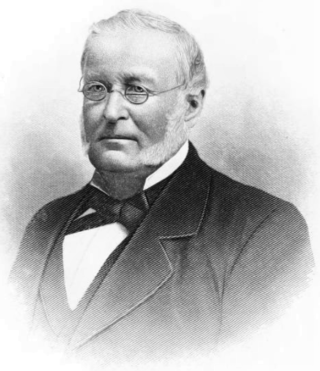
Joseph Farwell Glidden was an American businessman and farmer. He was the inventor of the modern barbed wire. In 1898, he donated land for the Northern Illinois State Normal School in DeKalb, Illinois, which was renamed as Northern Illinois University in 1957.
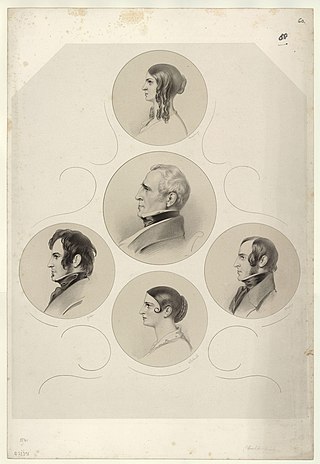
John Mitchell Kemble, English scholar and historian, was the eldest son of Charles Kemble the actor and Maria Theresa Kemble. He is known for his major contribution to the history of the Anglo-Saxons and philology of the Old English language, including one of the first translations of Beowulf.

William Fitzhugh was an American planter, legislator and patriot during the American Revolutionary War who served as a delegate to the Continental Congress for Virginia in 1779, as well as many terms in the House of Burgesses and both houses of the Virginia General Assembly following the Commonwealth's formation. His Stafford County home, Chatham Manor, is on the National Register for Historic Places and serves as the National Park Service Headquarters for the Fredericksburg and Spotsylvania National Military Park.
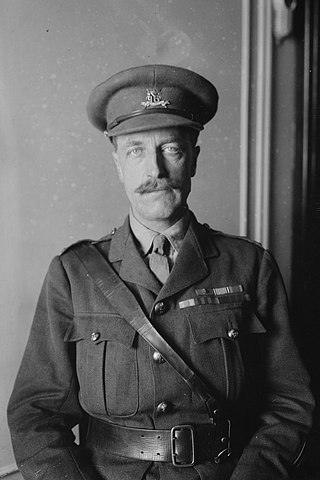
Alexander Edward Murray, 8th Earl of Dunmore, known by the courtesy title Viscount Fincastle until 1907, was a Scottish peer, soldier and politician.

Waldegrave is the name of an English family, said to derive from Walgrave in Northamptonshire, who long held the manor of Smallbridge in Bures St. Mary, Suffolk.

Potters Bar Urban District was a local government district in England from 1894 to 1974, covering the town of Potters Bar and the village of South Mimms. The district was initially called the South Mimms Rural District, being renamed in 1934.

Sir Horatio (Horace) Mann, 2nd Baronet was a British politician who sat in the House of Commons between 1774 and 1807. He is remembered as a member of the Hambledon Club in Hampshire and a patron of Kent cricket. He was an occasional player but rarely in first-class matches.

William Pritchard Weston was the third Premier of Tasmania.

Pishiobury, sometimes spelled Pishobury, was a manor and estate in medieval Sawbridgeworth, Hertfordshire. Its denomination as "Pishiobury" only emerged in the mid to late 19th century.

Sir Henry Chauncy was an English lawyer, topographer and antiquarian. He is best known for his county history of Hertfordshire, published in 1700.
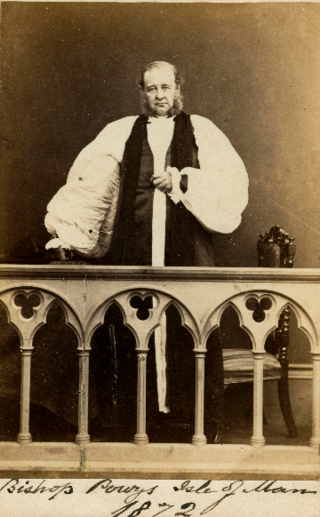
Horatio Powys was a priest in the Church of England and Bishop of Sodor and Man.
Howard Potter was an American industrialist, investment banker, diplomat and philanthropist, and a partner in Brown Bros. & Co.

Sir Horace (Horatio) Mann, 1st Baronet KB, was a long-standing British resident and diplomat in Florence.
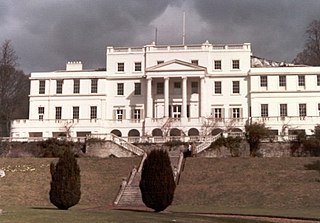
Linton Park, formerly Linton Place or Linton Hall, is a large 18th-century country house in Linton, Kent, England. Built by Robert Mann in 1730 to replace a much earlier building called 'Capell's Court', the estate passed through the ownership of several members of Mann's family before coming into the Cornwallis family. The house was enlarged to its current size in 1825.

Ellwood Manor is the Georgian-style home completed c. 1790 by William Jones, formerly in Spotsylvania County, Virginia but now in Orange County, Virginia. For more than a century, it was the center of a large, thriving plantation not far from the Chancellorsville crossroads on the Plank Road between Fredericksburg and Orange, Virginia which is now Virginia State Route 3. Not long before the American Civil War, J. Horace Lacy married William Jones' younger daughter and inherited both Ellwood and Chatham Manor.
Major Wulstan Joseph Tempest, was a British First World War pilot with the Royal Flying Corps and Royal Air Force. He was celebrated for shooting down a Zeppelin R Class airship over Potters Bar in October 1916.

Lindenshade(Wallingford, Pennsylvania), was the Wallingford country house and farm of Shakespearean scholar Horace Howard Furness (1833–1912) and family. The house's design is attributed to his brother, architect Frank Furness. It was expanded numerous times, and demolished in 1940. Two other buildings from the property survive. The Helen Kate Furness Library, a memorial to HHF's wife, was built at the west end of the property in 1916.

LZ 72 was an R Class super-zeppelin belonging to the Imperial German Navy. It was commanded by Kapitänleutnant Heinrich Mathy, an experienced commander, and took part in several raids over London during World War I. It also participated in a reconnaissance role during the Sunderland raid of 19 August 1916. Its last flight was launched late at night on 1 October 1916. Several miles north of London, it was caught in searchlights and anti-aircraft fire. During this engagement, 2nd Lt. Wulstan J. Tempest was on patrol and spotted the zeppelin. He proceeded to engage the airship with incendiary rounds, causing the ship to burst into flames and crash in a field near Potter's Bar. The entire crew died, and were originally buried there but were reinterred at Cannock Chase German Military Cemetery in the 1960s. After this disastrous crash, the Imperial German Navy began reducing the number of zeppelin raids.

Carss Bush Park is a 20-hectare (50-acre) nature reserve and urban park located at 74 Carwar Avenue, in the Sydney suburb of Carss Park, Georges River Council, New South Wales, Australia.





















